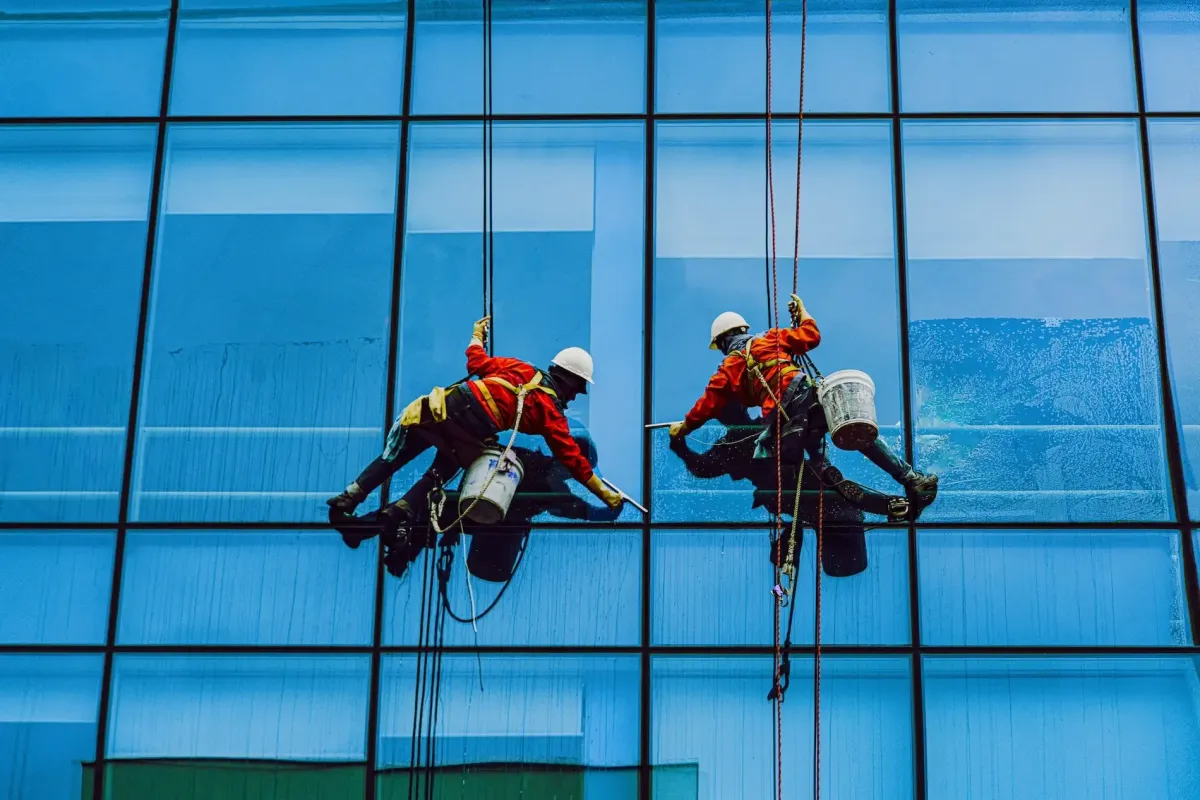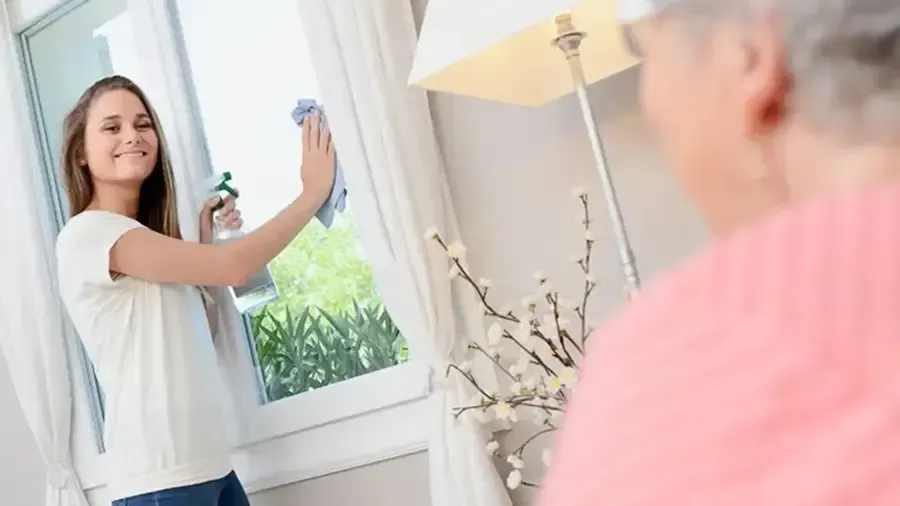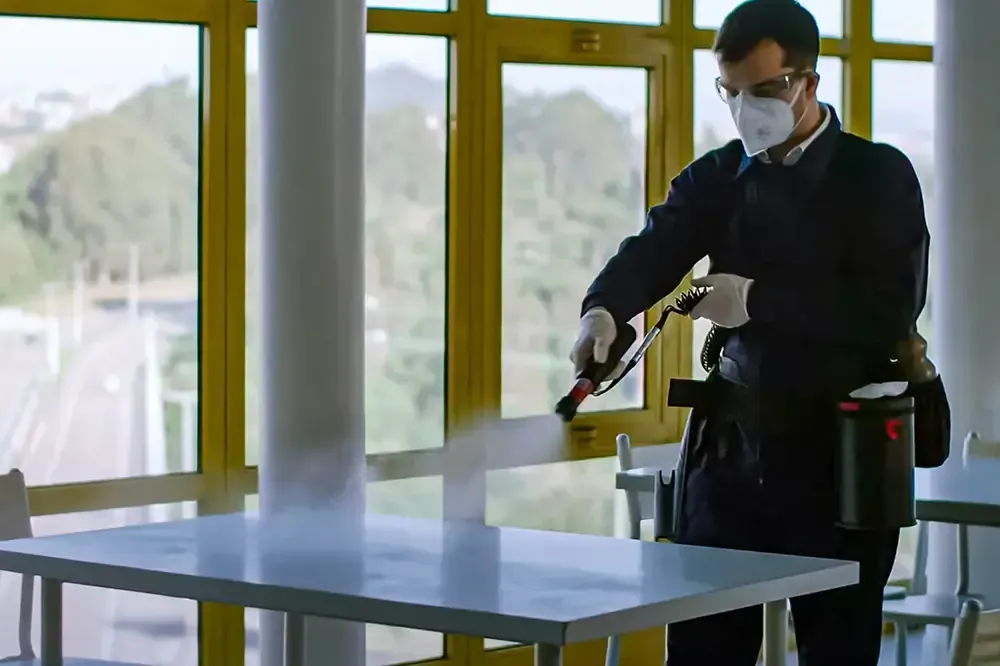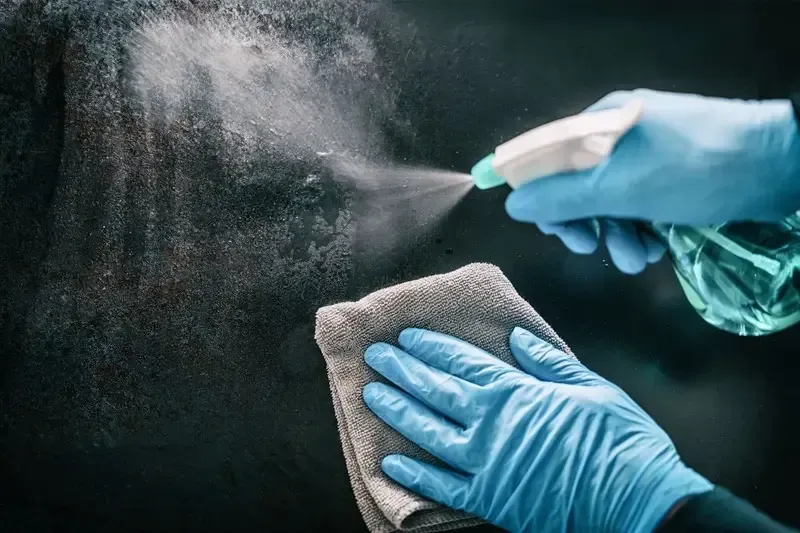Revolutionising Hygiene in Medical Centres to Offer Advanced Antimicrobial Protection for Enhanced Safety

The Critical Role of Advanced Antimicrobial Protection
Maintaining a pristine and hygienic environment in medical centres is more crucial than ever. These centres are not just facilities for healing; they are spaces where health and safety must coexist seamlessly to protect both patients and staff. With the constant influx of patients, each bringing their own health concerns, medical centres face a significant challenge in managing pathogen transmission. This challenge extends beyond treatment areas to include all communal spaces, from waiting rooms to consultation rooms, where the risk of cross-contamination is a constant concern.
The primary goal is to create an environment that not only feels safe and welcoming but is underpinned by the highest standards of cleanliness. The key is in addressing the invisible threats – the pathogens that lurk on surfaces, waiting to be unwittingly transmitted. Traditional cleaning methods, while necessary, are often not sufficient to combat these microscopic dangers. This is where Nordic Chem’s advanced antimicrobial protection steps in, offering a revolutionary solution to enhance the safety and hygiene of medical centres.
Our unique antimicrobial product is specifically designed to meet the rigorous demands of healthcare environments. Its powerful formula provides a lasting shield against a wide array of pathogens, significantly reducing the risk of surface-mediated transmission of infections. By integrating Nordic Chem’s protection into their hygiene protocols, medical centres can offer an added layer of safety – a reassuring promise to their patients and staff that their well-being is a top priority.
This commitment to advanced hygiene practices is not just about responding to the challenges of today; it’s about setting new standards for patient care and safety, ensuring that medical centres are equipped to provide the best possible environment for healing and health.

Setting New Standards in Medical Centre Hygiene
The Simple and Effective Application of Nordic Chem's Antimicrobial Solution
Integrating Nordic Chem’s antimicrobial protection into the daily hygiene routine of a medical centre is remarkably straightforward, ensuring that the transition to enhanced safety is both smooth and efficient. Our application process has been meticulously designed with the busy nature of medical environments in mind, focusing on ease and convenience without compromising on effectiveness.
The application of Nordic Chem’s antimicrobial solution is a swift and simple process. It involves a direct spray or wipe onto surfaces, allowing for quick coverage of large areas as well as precise application on high-touch points like door handles, reception desks, and seating areas. The formula is water-based, making it safe and hassle-free to use around patients and staff, and it dries quickly, causing minimal disruption to the daily operations of the centre.
Once applied, the product forms an invisible, odourless, and colourless protective layer. This layer bonds to surfaces at a molecular level, creating a durable barrier that remains active for an extended period. This long-lasting protection means that reapplication is not a frequent necessity, saving time and resources for the medical centre.
The ease of application of Nordic Chem’s antimicrobial solution is complemented by its compatibility with existing cleaning protocols. There is no need for extensive training or additional equipment; the product can be seamlessly incorporated into the centre’s current hygiene practices, enhancing them without adding complexity.
In essence, the application process of Nordic Chem’s antimicrobial solution is designed to be as straightforward and unobtrusive as possible, ensuring that medical centres can elevate their hygiene standards effortlessly, focusing their resources and attention on providing the best possible care to their patients.
Promoting Your Staffs Wellbeing with Round-the-Clock Enhanced Hygiene Protection
Teamwork Makes The Dream Work

In the dynamic environment of medical centres, the well-being of the healthcare team is paramount. Recognising this, our advanced antimicrobial protection plays a pivotal role in ensuring a safer and more reassuring working environment. Our product is meticulously developed not only to provide robust protection against pathogen transmission but also to enhance peace of mind, an aspect that is crucial yet often overlooked in healthcare settings.
The psychological well-being of staff working in high-risk areas is essential. By incorporating our antimicrobial protection into their daily routines, medical centres can significantly alleviate stress among their staff, offering them assurance that their health is safeguarded with state-of-the-art technology. This sense of security contributes to improved morale, greater job satisfaction, and a healthier, more positive work environment.
Moreover, our enhanced protection helps in reducing the risk of healthcare professionals contracting workplace-acquired infections. This has far-reaching benefits, not only for the individual staff members but for the entire healthcare system. Maintaining a healthy workforce is critical for the smooth and efficient operation of any medical centre.
Integrating our antimicrobial protection into medical centres signifies more than an enhancement in hygiene standards; it represents a profound commitment to the health and well-being of the individuals who are at the heart of patient care. It’s an affirmation of our dedication to fostering a supportive and safe environment Recent Blog Postswhere healthcare professionals can concentrate on their vital work, reassured that their workplace is protected around the clock.
Recent Blog Posts
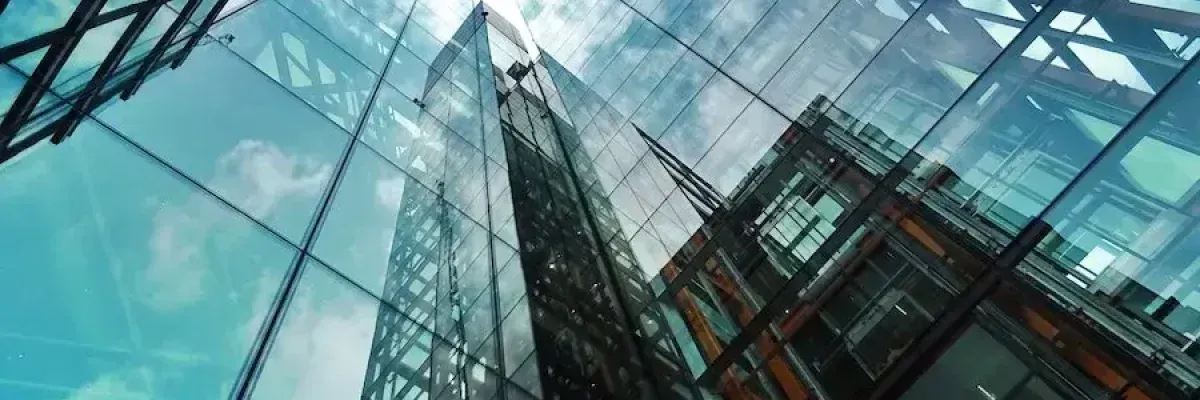
Revolutionising Architecture: The Rise of Green Coatings in Sustainable Building
Introduction to Green Coatings: Exploring Their Significance in Sustainable Architecture in Australia
Green coatings are a quiet yet profound revolution that is underway in Australia, driven by an increasing commitment to sustainability – innovative solutions that not only elevate the visual appeal of structures but also embrace the principles of environmental stewardship and sustainability.
Green coatings, characterised by their low or zero volatile organic compounds (VOCs), represent a significant advancement in reducing the environmental impact of buildings. These materials are more than a mere gesture towards environmentalism; they are a concrete response to the escalating concerns over climate change and resource conservation. As Australian architects and builders pivot towards more sustainable practices, green coatings have become an indispensable element in this eco-conscious journey.
In Australia, where environmental awareness and action are deeply ingrained in both policy and public consciousness, the importance of green coatings in architecture is paramount. With stringent environmental regulations and a societal shift towards sustainable living, these coatings transcend being a simple trend; they are a necessity. Merging state-of-the-art technology with ecological sensibility, green coatings allow buildings to be both aesthetically pleasing and environmentally responsible.
This article will delve into the significance of green coatings within the Australian sustainable architectural landscape. We will explore their environmental benefits, the technological innovations propelling their development, and their role in transforming the ethos of architectural design, underscoring how green coatings are not just improving buildings but revolutionising the entire field.
Environmental Benefits of Green Coatings
In the dynamic world of sustainable architecture in Australia, green coatings stand out as a beacon of environmental stewardship. These innovative coatings are not just a superficial layer of paint; they embody a profound commitment to ecological responsibility, offering several key environmental benefits that are reshaping the industry.
One of the most significant advantages of green coatings lies in their reduced volatile organic compound (VOC) content. Traditional paints have long been associated with high VOC levels, contributing to air pollution and posing health risks. In stark contrast, green coatings are formulated to significantly lower these emissions, thereby playing a pivotal role in enhancing air quality, particularly in densely populated urban areas where air pollution is a major concern.
Moreover, green coatings contribute to energy efficiency in buildings. Many of these coatings are engineered to reflect sunlight and heat, a feature that becomes particularly valuable in Australia’s warmer regions. By reducing the dependence on air conditioning, these coatings aid in cutting down energy usage and the associated greenhouse gas emissions, making them an ally in the fight against climate change.
Durability is another hallmark of green coatings. Their enhanced resistance to wear, tear, and weathering means they don’t require as frequent reapplications as traditional coatings. This longevity translates into less material usage and waste over time, underscoring their role in promoting sustainable consumption patterns.
The manufacturing process of green coatings also reflects an environmental sensibility. Compared to conventional paints, their production often involves more sustainable practices, such as utilising renewable resources, reducing water and energy consumption, and minimising waste. This approach to manufacturing not only lessens the ecological footprint of these coatings but also aligns with the broader goals of sustainable development.
Lastly, many green coatings are either biodegradable or made from recycled materials. This aspect is crucial in fostering a circular economy, ensuring that these coatings, at the end of their lifecycle, don’t add to the burgeoning landfill crisis but are instead reintegrated into the environment or repurposed.
In essence, green coatings are more than just an aesthetic choice; they represent a multi-dimensional approach to environmental sustainability. By reducing harmful emissions, enhancing energy efficiency, and embracing sustainable production and disposal practices, green coatings are instrumental in steering Australia’s architectural sector towards a more sustainable and environmentally conscious future.
Technological Innovations in Green Coatings

As Australia marches towards a more sustainable future, technological innovations in green coatings are playing a pivotal role in this transition. These advancements are not just enhancing the environmental benefits of green coatings but are also pushing the boundaries of what’s possible in sustainable architecture.
One of the most significant developments in this field is the advent of advanced bio-based coatings. Researchers and manufacturers are increasingly turning to natural, renewable resources as alternatives to traditional, petroleum-based ingredients. These bio-based coatings, derived from plant and animal sources, offer the dual benefits of sustainability and reduced environmental impact, without compromising on performance.
Another breakthrough is the incorporation of nanotechnology in green coatings. This involves manipulating materials at an atomic or molecular level to enhance their properties. For instance, nano-coatings can be engineered to be more resistant to moisture, UV radiation, and microbial growth. This level of control at a microscopic scale allows for the creation of coatings that are not only more durable but also more efficient in their environmental performance.
The development of smart coatings is also revolutionising the industry. These coatings can respond to environmental stimuli, such as changes in temperature, light, or humidity, and adapt their properties accordingly. For example, thermochromic coatings change colour based on temperature, offering potential energy savings in building cooling systems. Such smart coatings represent a leap towards more dynamic and responsive building materials.
Furthermore, there’s a growing focus on improving the recyclability and biodegradability of green coatings. Efforts are underway to develop coatings that can be easily recycled or decomposed naturally at the end of their lifespan, thus reducing waste and further promoting a circular economy in the construction sector.
Lastly, digital technologies like AI and machine learning are being employed to optimise the formulation and application of green coatings. By analysing vast amounts of data, these technologies can predict the best formulations for specific applications, enhancing the efficiency and effectiveness of green coatings.
In conclusion, these technological innovations are not just transforming green coatings; they are redefining the principles of sustainable architecture. By harnessing the power of bio-based materials, nanotechnology, smart functionalities, and digital optimisation, green coatings are set to play an even more crucial role in building a sustainable future in Australia.
Case Studies: Successful Implementations of Green Coatings in Architecture
In Australia, the implementation of green coatings in architecture has been marked by a series of successful projects. These case studies not only showcase the practical application of green coatings but also highlight their transformative impact on sustainable architecture.
One notable example is the redevelopment of a commercial building in Sydney. In this project, green coatings were applied to both the exterior and interior surfaces. The coatings used were specifically chosen for their low VOC content and energy-reflective properties. Post-application, the building reported a significant reduction in energy consumption, primarily due to decreased reliance on air conditioning. Furthermore, the improved indoor air quality was immediately noticeable, contributing to a healthier work environment.
Another significant project involves a residential complex in Melbourne, where green coatings played a crucial role in achieving its sustainability goals. Here, coatings with advanced moisture-resistant and insulating properties were used, contributing to the building’s overall energy efficiency. The project demonstrated how green coatings could be effectively integrated into residential construction, offering both environmental and cost benefits.
In Brisbane, a public school incorporated green coatings in its design, focusing on creating a safe and healthy learning environment for students. The coatings used were not only eco-friendly but also possessed anti-microbial properties, ensuring the long-term durability of the surfaces and a healthier environment for the students.
Additionally, a landmark cultural centre in Perth showcased the aesthetic versatility of green coatings. The project utilised coatings derived from natural, renewable sources, which provided a range of vibrant, long-lasting colours. This case study highlighted the intersection of sustainability and design, proving that eco-friendly choices do not have to compromise on aesthetic appeal.
These case studies underscore the versatility and effectiveness of green coatings in various architectural contexts. From commercial and residential buildings to educational institutions and cultural centres, green coatings are proving to be an indispensable component in the pursuit of sustainable architecture in Australia.
The Future of Architecture with Green Coatings
As we look towards the future of architecture in Australia, it’s clear that green coatings will play an increasingly significant role. The advancements in this field are not just a passing trend but a fundamental shift towards a more sustainable approach in the construction and design industries.
The potential for green coatings in the future of architecture is vast. We can expect to see these coatings become even more advanced, with properties that could revolutionise the way buildings interact with their environment. For instance, coatings that actively purify the air, self-clean, or even convert UV rays into renewable energy are within the realm of possibility.
The integration of green coatings with other sustainable building practices is also likely to become more prevalent. This holistic approach would see green coatings used in conjunction with renewable energy sources, green roofs, and sustainable materials to create buildings that are not just environmentally friendly but are actively beneficial to the environment.
Moreover, as public awareness and demand for sustainable practices grow, green coatings are set to become a standard in construction, rather than an optional extra. This shift will be driven not only by environmental considerations but also by the economic benefits of energy savings and the health benefits of improved air quality and safer living environments.
In the policy realm, we can anticipate more stringent regulations and incentives that promote the use of green coatings in both new constructions and renovations. These policies would play a crucial role in accelerating the adoption of sustainable practices across the architectural sector.
In conclusion, the future of architecture with green coatings looks bright and promising. These materials are set to become an integral part of how buildings are designed, constructed, and maintained, leading to a more sustainable and environmentally responsible future in the Australian architectural landscape.
The GBCA website is a valuable resource for information on sustainable building practices in Australia, including the use of green coatings. It offers insights, case studies, and detailed reports that could provide readers with a broader understanding of the role of green coatings in sustainable architecture.
Delivering Tailored Solutions to Meet All Your Requirements
We’re excited to share more about how our innovative surface protection solutions can benefit you and your organisation. Please fill out this form with your details, and let us know any specific areas you’re interested in. Our team is dedicated to providing personalised information and will get back to you promptly with tailored insights and answers to your queries. Let’s start a conversation about bringing our superior surface protection to your space!
Get in Touch with Us
We’re excited to share more about how our innovative surface protection solutions can benefit you and your organisation. Please fill out this form with your details, and let us know any specific areas you’re interested in. Our team is dedicated to providing personalised information and will get back to you promptly with tailored insights and answers to your queries. Let’s start a conversation about bringing our superior surface protection to your space!
Sunshine Coast, Queensland
Monday - Friday, 8:00 am - 5:00 pm
Please Let Us Know Your Request
*Please select your appropriate requests
Industries
Follow Us
Surface Protection Solutions implement a sustainable surface protection program that reduces costs, increases customer satisfaction and promotes consumer confidence.
Surface Protection Solutions
© Copyright 2024 | All rights reserved.


